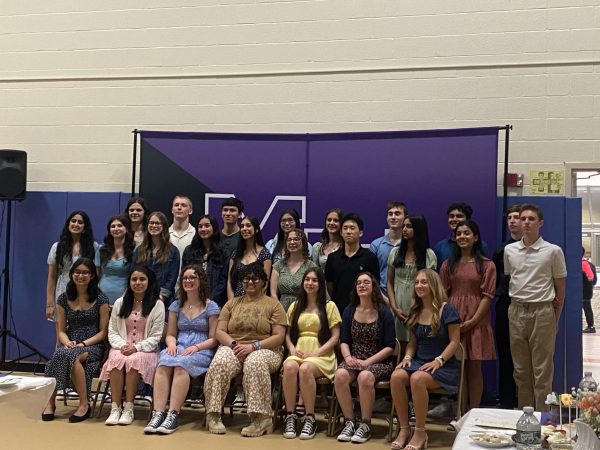Opinion: Teachers Need to Revamp Group Projects
February 8, 2021
You’ve finally finished reading A Tale of Two Cities for English, when your teacher speaks those fateful words: “Now, we’ll begin working on a group project.” It’s a situation that all high schoolers are familiar with, and, I would go so far as to say, are fearful of.
Throughout the course of a high school career, many students will encounter the classic Group Project™ – equipped with your knowledge, a one-page assignment description, and a deadline. You and your group have to consolidate a unit’s worth of work into one last project. The catch is not everyone else in your group seems to be as concerned about its impending deadline as you. Maybe its downfall is that your group seems to not want to use, or even hear, your ideas for the project.
Group projects are intended to teach a variety of skills. Students are meant to learn how to delegate roles and responsibilities, manage time efficiently, and hold themselves and one another accountable. Students are able to engage with opposing ideas and encounter varied perspectives on how to handle the assignment. Group projects should provide an interactive learning experience, allowing students to cultivate a deeper understanding of the topic than a simple lecture could provide.
During and beyond a student’s educational career, collaboration is a fact of life. With group projects, our curriculum has an opportunity to cultivate these vital skills within students. Unfortunately, current group projects fail to capitalize on this opportunity. No matter what your experience has been, we can all agree that the current model for group projects is not effective.
Group assignments are often geared toward content production. There has to be a final essay or presentation, and the most important part of the assignment – the collaborative process – is neglected. Students are given vague roles or are expected to assign the roles themselves, which often comes down to numerically dividing work by the number of members, creating independent, rather than a web of interdependent, roles.
For example, after reading a chapter in a book, I was assigned a dual-assignment project. One half was an essay, the second was a creative project, and it was to be completed in a group. We were left to delegate roles ourselves, and it led to one or two members doing the large majority of work on each section, while all other members contributed little writing or just edited afterward. The division of effort being ill-defined causes students to often work on their own isolated piece of the project, and subsequently patch their section into the final draft, or sometimes, to not contribute at all.
To avoid this pitfall, teachers should work with students to create roles that are interdependent and allow for genuine collaboration and equal contribution between members. By agreeing on an equal distribution of work from the onset, no one member will contribute more or less than the others.
Time management is another skill that group projects are intended to improve. Often, assignments with long term deadlines are left by the wayside, as students prioritize assignments that are due sooner. To address this, teachers should implement a series of checkpoints to track progress during the project, rather than just a final deadline. This provides an opportunity for students to ask questions and receive feedback at regular intervals. Additionally, a project could be broken down into multiple deliverables with distinct due dates, making the project more manageable, and mitigating procrastination.
Another way to minimize procrastination and other pitfalls of group work is the implementation of an evaluation system that impacts each individual’s grade. This evaluation system could come in the form of a rubric that each group member fills out about one another once the project is completed.
Alternatively, each member could submit a write-up of their contributions to the project as a justification for their grade. Grades on these projects should be made up of more than just the final product which would be standardized across the group. A component of the grade should reflect the individual’s contributions to the project. This would ensure that members receive the grade they deserve.
Let’s revisit the assignment I mentioned earlier and apply these ideas for improving group projects. The project would be given a concrete due date and multiple checkpoints where the teacher would be able to see their students’ progress, or these checkpoints could be replaced by deliverables that would divide the assignment into distinct parts with separate due dates. The assignment would be given distinct roles delegated within the group to each member, possibly assigning a specific paragraph of the essay or section of the creative project to each person. Students would be provided time in class to organize their roles and ensure the final product is cohesive. Finally, the project would be graded on an individual level, and members would identify the specific sections they completed to identify each person’s work.
This project is a more efficient use of time, effective at teaching collaboration, and fair. Encouraging each member to put effort into the project will guarantee the project does not fall on the shoulders of only one or two despondent students.




